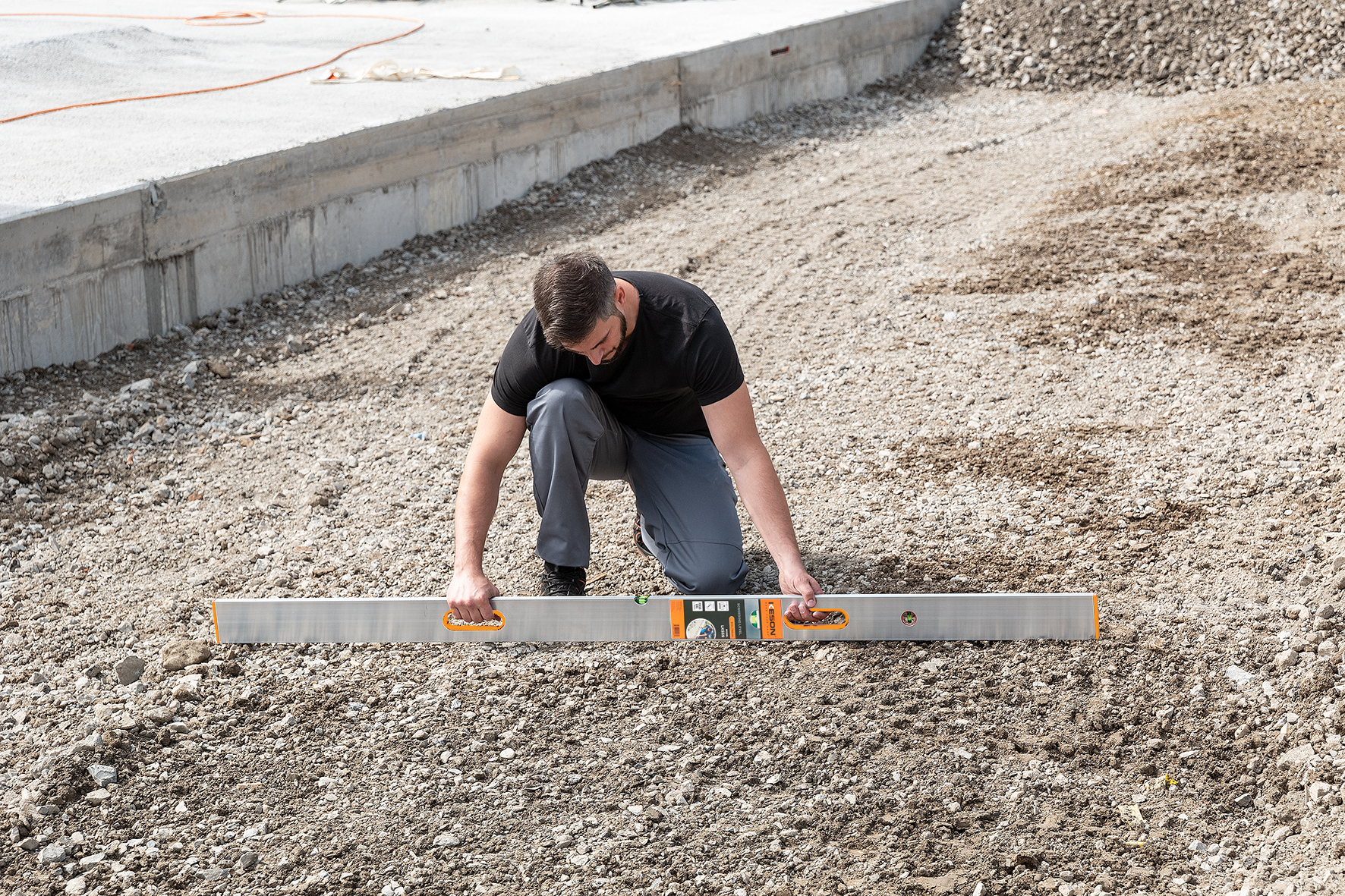Selecting the Best Tool for Properly Screeding Concrete
 Screeding is the very last step you’ll take in finishing off a new concrete surface. Whether you’re getting a surface ready for pavers, setting a basement floor or concrete countertop, it’s important in the final stages that the concrete is completely level. This ensures a smooth, even surface once the concrete cures, without ridges, bumps or hollows.
Screeding is the very last step you’ll take in finishing off a new concrete surface. Whether you’re getting a surface ready for pavers, setting a basement floor or concrete countertop, it’s important in the final stages that the concrete is completely level. This ensures a smooth, even surface once the concrete cures, without ridges, bumps or hollows.
A smooth concrete surface helps ensure better long-term results, without settling or cracking, both of which may occur if you have too many highs and lows in the finished surface.
Screeding concrete is simple and, when done correctly, will give your finished project the right finish and level surface for curing.
What Is Screeding?
Screeding is the process of dragging a flat edge over wet concrete to level the top surface. It’s the final step to the setting process before curing can begin.
After an area has been leveled and the concrete poured, the wet concrete may create some small hills, domes, dips or slopes, depending on how level the original surface was. Screeding takes those anomalies out of the finished surface, giving you a smooth, level surface to cure.
The Best Tool for Screeding Concrete
Technically, the only thing you need to screed concrete with is a flat board. But simply purchasing a 2×4 and attempting to use it this way has a few drawbacks, which can lead to substandard results.
Most 2×4 pieces of lumber sold at big box stores are not truly straight. They may be slightly warped, or they may have an edge that’s beveled off or contains a knot or sap hole. Trying to use one of these boards to screed the concrete may mean that you need to make multiple passes to get a level surface. Worst of all, you may still miss areas or accidentally create some hills or hollows that you don’t notice right away.
Lumber and simple pieces of aluminum also can’t tell you if a surface really is level. Yes, they can help flatten the top of the concrete, but if you’re holding it at a slight angle, you may take too much concrete off the top on one side. Now your surface will have a slight slope to it that you didn’t intend to create.
Using a screeding level—a tool specifically designed for this work—can be the answer. Screeding levels are completely flat on the edge you’ll be placing on the concrete. There’s no worry of beveling or missing a section. They also contain a level vial that lets you see at a glance if you’re tipping one way or another or if you need to make another pass to achieve a truly level surface.
A good screeding level will be capped at both ends to help prevent concrete from getting inside. It will also be made of a tough aluminum alloy to resist warping and prevent damage to the tool if it’s accidentally dropped. The edges should be crisp and smooth, to make passing over the concrete easier and to give you a smooth surface when complete.
A 2×4 piece of lumber can’t compare with a good screeding level. A level will help you get the job done more quickly and more accurately with fewer passes.
How to Screed Concrete
Screeding is very simple. It must be done the minute that the spreading of the concrete is complete and before the excess bleed water comes to the surface. Screeding is sometimes also called “striking off” because, in the process, you will also be striking off, or removing, some of the excess concrete from the surface.
To screed the concrete, set the flat edge of the tool at the end of the concrete. Use light pressure and check to make sure the screed is level. Pull it across firmly and evenly to the other side of the concrete.
This will remove a small amount from the top of the concrete, and ensure that what’s left behind is a level surface. Doing so will also remove any hills and fill any holes at the same time. When you’re done with a section, move to the adjacent area and continue. Check that the finished surface is level before moving on.
When the entire area has been screeded, the concrete can be left to cure.
Screed Concrete Properly for Best Results
While a flat surface is all that’s needed to screed concrete, that doesn’t always give you the best results. Use a proper, quality screeding level like those made by a reputable company such as Keson. With the right tool, you’ll get smooth, accurate results in less time and with less effort.
With a screeding level, you can also ensure true level at a quick glance, rather than screeding with wood first then checking for level afterward, with another tool that may not be right for the job and could be difficult to clean. Screed your concrete properly for the best results, and enjoy the level surface when you’re done.

